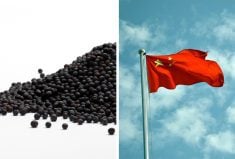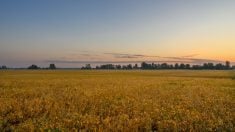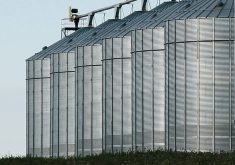SYDNEY (Reuters) — Production of several key agricultural commodities in Australia will remain hampered by drought next season despite an improvement in climatic conditions in recent weeks, the country’s chief commodity forecaster said on Tuesday.
Production of wheat, Australia’s largest winter crop, will remain constrained but the crop will be the seventh highest on record, the Australian Bureau of Agricultural and Resource Economics and Sciences (ABARES) said.
Higher Australian production will add pressure to global wheat prices. The benchmark touched a four-month low last month amid ample worldwide supplies.
Read Also

Canada and China discuss disputes over canola and EVs, says Ottawa
Senior Canadian and Chinese officials discussed bilateral trade disputes involving canola and electric vehicles on Friday, Ottawa said, but gave no indication of any immediate breakthrough.
Wheat production will total 24.39 million tonnes in the 2015-16 season starting July 1, ABARES said, a rise of three percent from this year’s 23.61 million tonnes.
However, ABARES said production would continue to feel the impact of drought, with insufficient rain leading to weak yields. The increase would be driven by higher plantings, estimated at a four-year high of 34.12 milion acres.
ABARES said wheat yields would on average be just three percent higher than in the drought-hit season of 2014-15.
“We have had some reprieve in recent weeks, but soil moistures remain relatively dry,” said Jammie Penm, chief commodity analyst at ABARES.
While big grain farms have felt a financial pinch due to drought, Australia’s cattle farmers have borne the brunt of the adverse weather.
Unable to find enough food or water, farmers have been forced to slaughter animals at record levels over the past two years, pushing the size of the national herd to at least a 17-year low.
Although ABARES said it expected the pace of slaughter to ease to a two-year low, the size of the national herd will fall to 26.5 million head.
With smaller production, Australian beef exports are set to fall to a two-year low of 1.158 million tonnes.
Lower beef production will squeeze large buyers of Australian beef, most notably the United States, which has imported record amounts as drought hit its own herd.
Cotton production is set to rebound but output is well below historical averages.
ABARES said national cotton production would hit 559,000 tonnes, up nearly 19 percent from the previous season but less than half that seen three years earlier.
Not all crops will rebound, ABARES said, with canola production seen falling more than four percent year-on-year to 3.264 million tonnes.
ABARES said sugar production would hit an eight-year high of 4.962 million tonnes.














